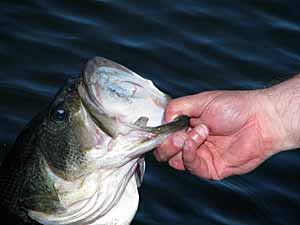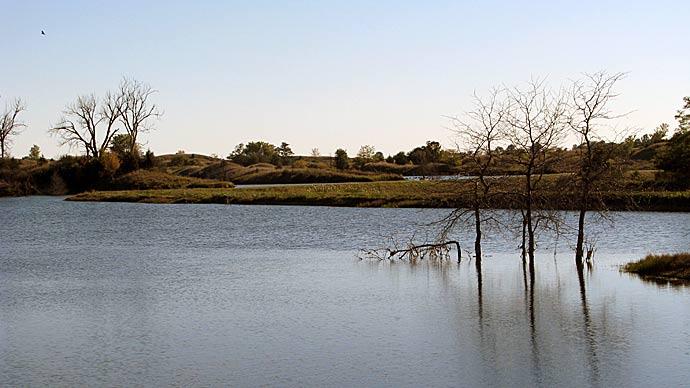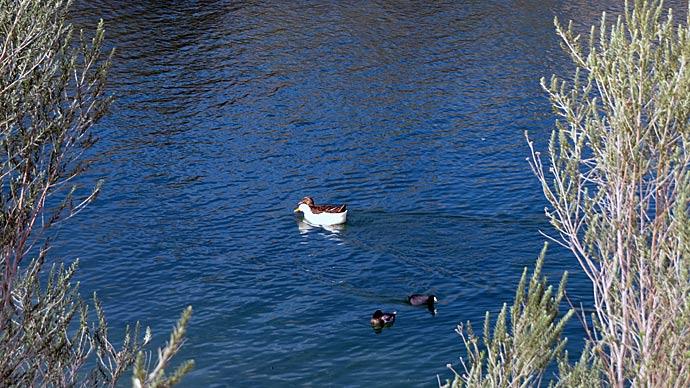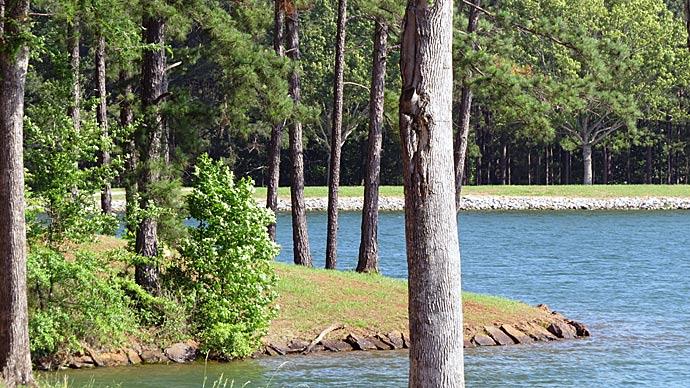
When I bought my property in North Texas five years ago, it had a very small pond on it - about one-third of an acre. As my wife and I walked around the property, she visualized where the house would go, what the barn would look like, where she would ride her horses. Not me.
I would visualize my new pond. About this time I subscribed to Pond Boss and I began to learn. We now have 50 acres and if it were up to me, 49 of it would be under water.
Unfortunately, what I learned is that the lay of the land and the historical annual rainfall (and budget) are the real determining factors when building a new pond. It turns out that the best place for my new pond was right where the existing small pond was located. With construction flags, I marked the outline of where I wanted the pond to be. It would cover about five acres.
The next step was to hire the contractor to build the pond. I was happy with the guy who built the road on my property, so I asked him if he builds ponds.
"I've built many tanks," he said. But after I asked him a few questions, I could see we were not on the same page.
I envisioned a perfect habitat for bass with ledges and drop-offs. But he was thinking of a bowl in the ground. He is a very nice guy and to this day still does other dirt work for me. I am sure he would have tried to follow my direction, but I needed an expert who knew how to build ponds for fish, not cattle.
I called Pond Boss and they gave me the names of some experienced fish-pond builders who worked in my area. Mike Otto came out to my property and we walked the area that I had marked for the pond. I was in good hands.
Mike asked me a number of questions: What type of fish would we stock? Did we want an island? Would the pond be used for swimming? What about a dock?
Mike did a basic survey of the area that I had marked, and I learned that what I had in mind was not going to work. Some areas had too much slope, other areas would require the removal of 4-to-5 feet of dirt, just to have one foot of water depth.
Not only was my original plan cost-prohibitive, I did not want a five foot drop-off to get to the water on one side of the pond. Mike tested the soil to determine how it would hold water and then did a detailed survey and made a drawing of what was the best use of the land. We came up with a pond that would cover about three acres. We would work with nature, not against her.
My existing 1/3-acre pond was drained, but about one foot of water remained. We seined the pond and removed what catfish, crappie, bluegill and bass we could catch and moved them to another pond. I did not want these fish, specifically the crappie, to be in my pond and compete with my bass.
Unfortunately, there were many fish that we could not catch so I had the unpleasant task of killing the remaining ones. I was advised that for my situation, swimming pool chlorine was the best choice to accomplish this and it did the grim work we expected.
While Mike was moving the dirt, I began accumulating the fish habitat or "cover" to go in the pond. Sanford and Son from the TV series had nothing on me.
I had an old stove, a truck-bed camper, two mailboxes, about 30 old tires, a huge pile of mostly broken cinder blocks, 40 Christmas trees (a week after Christmas you can get all you want), numerous tree branches from trees cleared for the pond and last but not least a toilet.
About then, I contacted my fisheries consultant, Bob Lusk. I had read his book, "Raising Trophy Bass," so I had a basic grasp what to do, but I wanted his advice on my specific project.
Bob recommended that I put cover in about 20 percent of the pond. Although my pond is 12 -to-15 feet deep, all the cover was placed in 3-to-6 feet of water as he advised. Before construction, I had been prepared for the expense to have my pond dug deeper, but learned that for my objectives and because of where the pond is located geographically, there was no good reason to do this.
At last the dirt work was completed and the pond began to fill. When it was about half full, we put in the forage base -- 3,500 one-inch copper-nose bluegill and 15 pounds of fathead minnows.
A neighbor told me about some type of giant hybrid bluegill. My goal is big bass and the purpose of the bluegill in my pond is to be food for the bass. I learned from Bob that the hybrids breed once a year and the copper-nose breed three to four times a year in my climate, so I stuck with those. Right away, I began feeding with high-protein pellets.
Eleven months went by before I introduced my bass. By this time my pond looked like a bluegill and minnow farm. When I would feed, thousands of bluegill and minnows of all sizes could be seen.
The largest bluegill (my brood stock) had reached about five inches by this time and were safe from the bass. Their babies and the minnows however, were in big trouble.
We put in 300 bass consisting of both native largemouth and pure Florida strain. The native fish are more aggressive and easier to catch, while, the Florida grow faster and tend to get bigger.
In time they will breed together and I hope to get the best of both. The bass went in during May of last year, and they were 5-to-7 inches at the time.
I can hardly believe it myself, but by the time this magazine went to press in December of 2002, the fish had already grown to 13 inches in length and weighed 1.25 pounds. These guys are eating machines.
The area where I feed the bluegill is the "beach" and the water is fairly shallow with a very gradual slope. Before I throw the first piece of food, the bluegill know it's coming and they swarm. The bass get busy, too. The largemouth apparently know the bluegill are coming and they are there waiting to chase their prey up onto the beach to eat them.
It is pretty neat t watch these bass catch a bluegill in three to four inches of water.
The only real problem that I have had so far is that my water was too muddy. I needed to get grass growing around the pond to keep the runoff clear.
The water would not clear on its own so I had it tested. It had suspended clay particles that were keeping it muddy. I added gypsum and it worked like magic.
With the water clearer, I began to get my first plant growth and I plan to fertilize in the spring. My whole experience has been great so far.
Thanks for all the information, advice and contacts available in Pond Boss. I have also been a big user of the website as well. I will keep you posted and let you know when I catch that first 10-pound bass.
Reprinted with permission from Pond Boss Magazine



